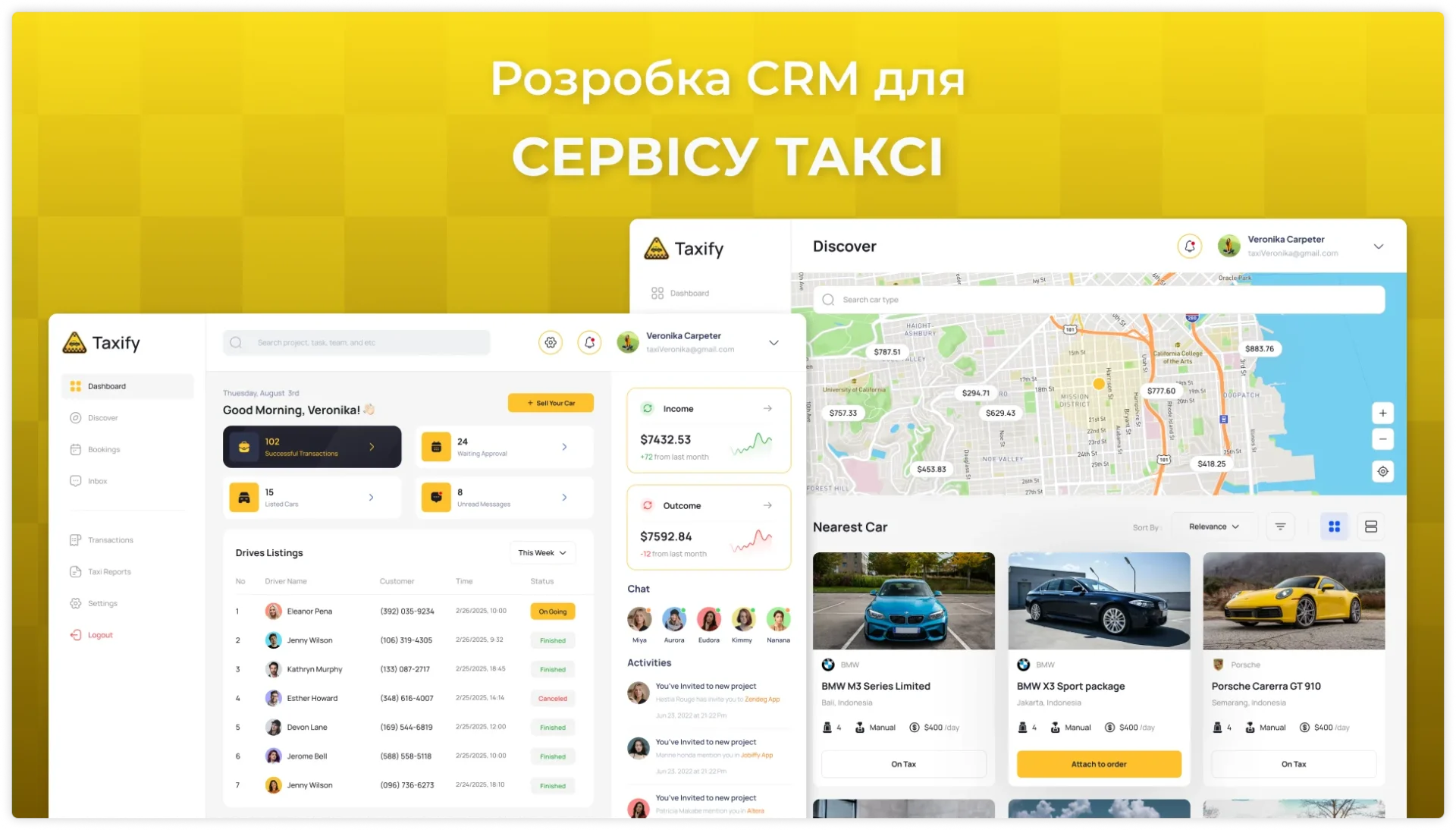
The modern passenger transportation market is becoming more and more dynamic. Customers expect instant service, drivers strive for stable earnings, and fleet owners strive for transparent and efficient management. Fleet automation makes it possible to optimize workflows, minimize costs, improve the quality of service and increase business profitability. Ordering the development of CRM for taxi in AVADA MEDIA is a step that will help make your business the pulse of your city.
CRM for the fleet is a taxi program that automates all the key processes of the work of drivers and the dispatching service. It includes modules for order management, trip distribution, analytics, driver and vehicle accounting, financial control, etc. This is your personal control center that ensures the smooth operation of the passenger transportation service.
Taxi fleet owners and dispatch services face a number of problems on a daily basis that complicate effective business management:
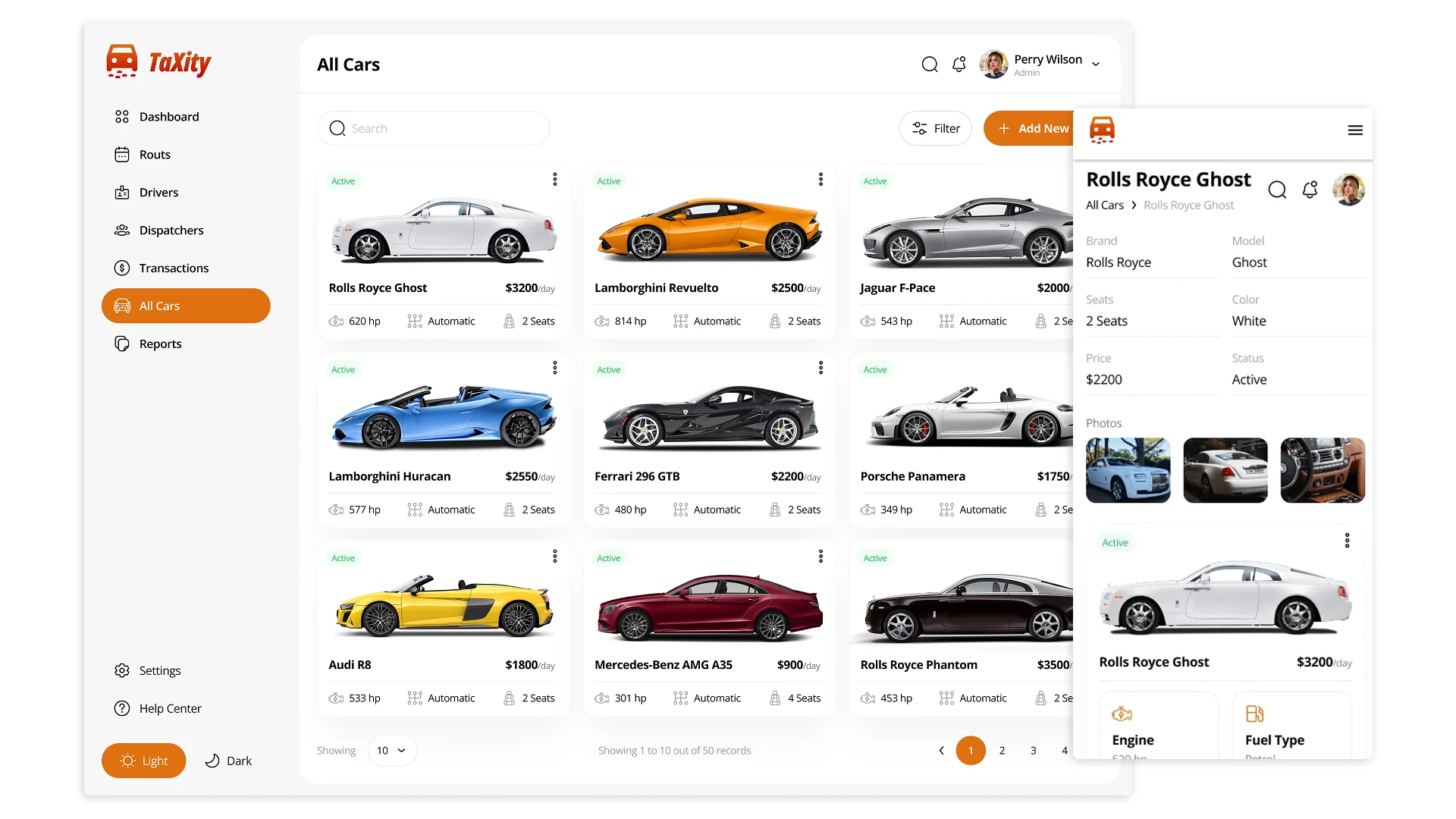
Fleet management software is a powerful tool that allows you to comprehensively manage all aspects of your business: from taking orders and assigning drivers to analyzing performance and customer interactions.
Taxi service CRM system
Thanks to innovative technologies, the taxi program can provide advanced options and opportunities for both business owners and drivers and passengers.
Enhanced security
Advanced options for clients
Use of artificial intelligence
Cybersecurity and data protection
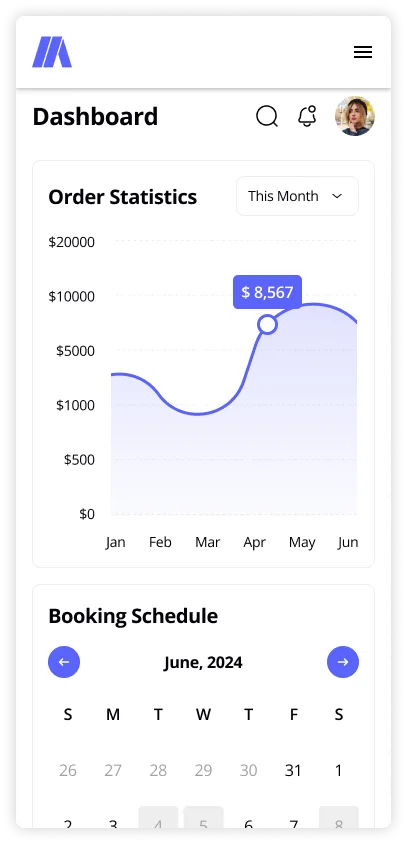
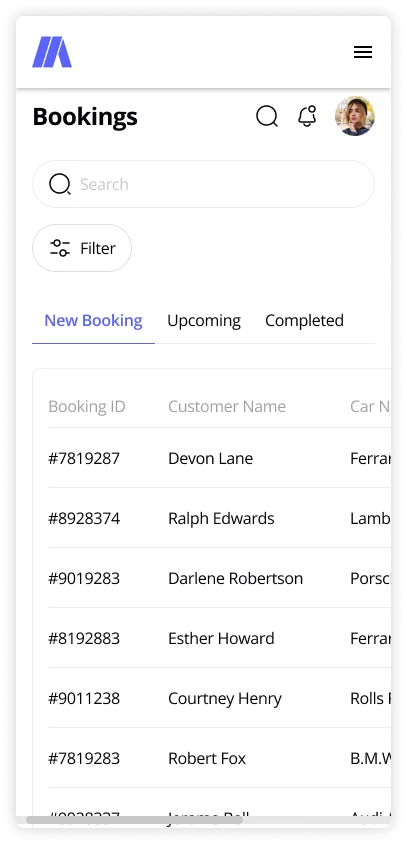
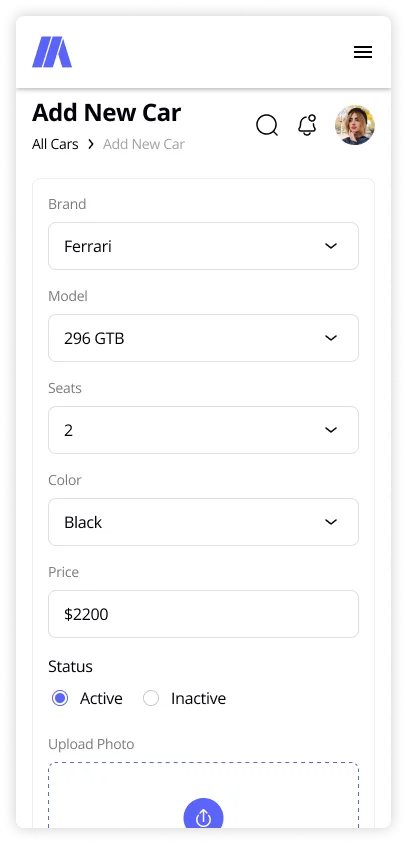
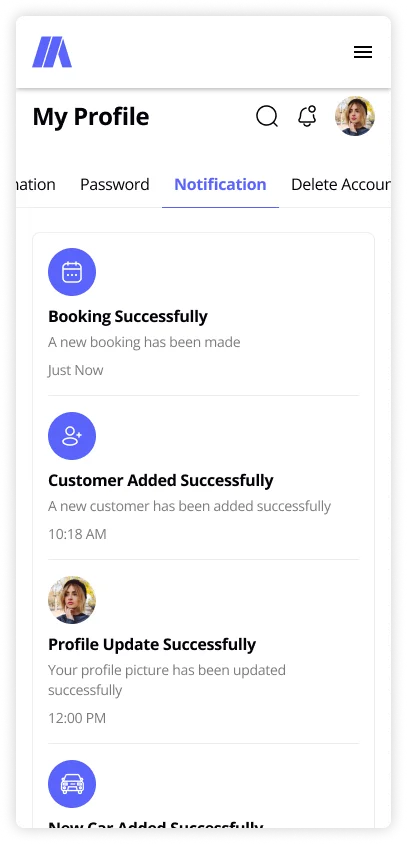
Adaptation of CRM for taxis to mobile screens
A CRM program for fleet management increases the efficiency of all business participants:
Automation of passenger transportation is a long and consistent process that takes place in several stages.
At the first stage, the team of analysts immerses themselves in the specifics of the company’s work, studying the current processes: the number of vehicles, methods of accepting orders, types of transportation (urban, intercity, corporate), the load on the dispatching service and existing software solutions. Identify the key problems that the automation of the taxi dispatcher can solve: delays, suboptimal machine distribution, customer losses. Key performance indicators are also determined: submission time, number of completed orders, customer satisfaction level.
Based on the analysis, a detailed technical specification is formed. It defines the mandatory functions: automation of the taxi dispatch service (distribution of orders taking into account traffic congestion), driver motivation system, integration with GPS trackers, mobile applications for drivers and customers, payment systems, fuel cost control modules, fleet maintenance planning, etc and the cost of the project.
Based on the terms of reference, they develop the logic of CRM for the fleet, model business processes – for example, the distribution of orders between drivers, tariff management, route efficiency analytics. Develop the architecture of the taxi program for drivers and create interactive interface prototypes: maps displaying cars, an order management panel, a driver’s personal account. Using tools such as Figma, Sketch and Moqups visualize the future program for a taxi, demonstrate it to the customer and make adjustments.

Designers create a convenient and intuitive interface that takes into account the specifics of the work of dispatchers and drivers. For example, a minimalistic interface is being developed for drivers that does not distract from the road, and an informative panel with all the necessary data is being developed for dispatchers.
Programmers implement the server and client parts of the CRM system for the fleet. Front-end development includes the creation of a web interface for dispatchers, mobile applications for drivers and clients using the frameworks Flutter, React Native, React, Angular or Vue.js. The backend part is created using Python, Node.js, Java, PHP. These are the development of server logic, database management (PostgreSQL, MongoDB), API implementation for integration with external services.
An important stage is testing all components of CRM for taxis in real conditions: peak hours are simulated, the operation of the system is checked with a large number of orders, GPS tracking is tested in different areas of the city. Particular attention is paid to security testing: protecting customer data, preventing unauthorized access.
After successful testing, the system is deployed on servers and gradually introduced into operation. Dispatchers and drivers are trained, instructions and consultations are provided.
Any CRM system for a taxi needs technical support: error elimination, system updates, consultations. Developers collect feedback from users, analyze data and make changes to improve the system, add new features – for example, a loyalty program, integrations with messengers, analytics for demand forecasting.
Some taxi fleet owners are in no hurry to order a CRM program, fearing the possible difficulties associated with the implementation of new software. In fact, all the risks of CRM implementation are easily controlled, and the benefits far outweigh the possible difficulties.
Taxi service owners think that fleet automation is expensive. However, fleet control software reduces operating costs, optimizes routes, and saves fuel. In the long run, a taxi CRM pays off by increasing profits.
Some employees are afraid of not being able to cope with the new software. Our specialists provide technical support for the system and develop an intuitive interface that requires minimal training time.
Drivers may feel that CRM transparency will limit their freedom. In fact, the system makes their work more convenient: orders are distributed honestly, there is no need to wait for calls from dispatchers, and the rating allows you to get more profitable orders. For drivers, the management system is a tool to increase earnings.
A high-quality CRM is developed with fault tolerance in mind, and server capacities ensure stable operation. Local solutions that do not depend on Internet access are also possible.
The individual development of a CPM for a taxi lasts several months, and the integration process takes place in stages so that you can switch to the new system gradually, without downtime.
A simple CRM system for a taxi service
Ready-made CRM solutions for taxi at first glance seem to be a convenient and fast option, but in fact, they lose out to individual systems:
Unlike template and universal automation systems, individual CRM development for a taxi fleet allows you to create a system that will take into account all the features of your company, including unique pricing models, features of interaction with drivers and customers.
Custom development makes it easy to scale the system as your business grows, implement new modules, and integrate with external and internal services. Your own Taxi program for drivers and dispatchers contains only those features that your business needs and contributes to its growth.
AVADA MEDIA provides services for the development of CRM systems for a full-cycle fleet: from creating from scratch to scaling existing solutions. We understand that every business is unique and help create tools that solve your problems as efficiently as possible, increase productivity and ensure the growth of your business. Taxi and fleet automation will help make your company a leader in the passenger transportation market, thanks to powerful and flexible tools for management and development.
Is it possible to integrate taxi software with cameras in cars?
Yes, the system supports integration with dashcams and cameras in the car. This helps to control the behavior of drivers, resolve disputes with passengers and ensure the safety of trips.
How does the CRM help reduce fuel costs in a taxi?
The program analyzes fuel consumption, compares real consumption with standard consumption, tracks routes and recommends the best ways to minimize costs. It is also possible to connect to refueling control systems and fuel cards.
Does the taxi fleet software support automatic driver matching?
Yes, the system can automatically select a driver, taking into account his rating, experience, geolocation and current load. This reduces waiting times for customers and improves fleet efficiency.
Is it possible to connect CRM to state registers and driver verification services?
Yes, there is a possibility of integration with government databases to check driver’s licenses, criminal records, insurance events and fines, which increases the safety and reliability of the fleet.
Can a program for taxi services predict the demand for services?
Yes, CRM can use historical data, weather, events, and time of day information to predict peak loads and recommend car distribution to the most popular areas.
How does CRM help to monitor the technical condition of cars in a taxi service?
The system automatically reminds about maintenance, keeps a history of repairs, reports malfunctions and can be integrated with car sensors to monitor the condition of the engine, brake system and other key components.
Does the CRM for the fleet support car sharing and car rental?
Yes, the system can manage not only the taxi fleet, but also rental and car-sharing services, allowing you to control access to cars, tariffs, payment and monitoring of vehicle usage.
How much does it cost to develop a CRM system for a taxi?
The cost of a taxi program depends on many factors: functionality, complexity of integrations, the need for customization, and the level of security. It is important to analyze the needs of the business so that the price of the taxi program corresponds to its capabilities.
Is there a program for a taxi without a dispatcher?
Yes, such a program uses algorithms that automatically find the nearest available driver, assign orders and optimize routes.
Is the taxi dispatcher suitable for a small town?
For small towns, it is important that the CRM for the taxi fleet dispatch is convenient, inexpensive and easy to configure for local characteristics. The optimal solution is an individual system with basic functions.
Our works
Contact the experts Have a question?
Developed by AVADA-MEDIA™
The user, filling out an application on the website https://avada-media.ua/ (hereinafter referred to as the Site), agrees to the terms of this Consent for the processing of personal data (hereinafter referred to as the Consent) in accordance with the Law of Ukraine “On the collection of personal data”. Acceptance of the offer of the Consent is the sending of an application from the Site or an order from the Operator by telephone of the Site.
The user gives his consent to the processing of his personal data with the following conditions:
1. This Consent is given to the processing of personal data both without and using automation tools.
2. Consent applies to the following information: name, phone, email.
3. Consent to the processing of personal data is given in order to provide the User with an answer to the application, further conclude and fulfill obligations under the contracts, provide customer support, inform about services that, in the opinion of the Operator, may be of interest to the User, conduct surveys and market research.
4. The User grants the Operator the right to carry out the following actions (operations) with personal data: collection, recording, systematization, accumulation, storage, clarification (updating, changing), use, depersonalization, blocking, deletion and destruction, transfer to third parties, with the consent of the subject of personal data and compliance with measures to protect personal data from unauthorized access.
5. Personal data is processed by the Operator until all necessary procedures are completed. Also, processing can be stopped at the request of the User by e-mail: info@avada-media.com.ua
6. The User confirms that by giving Consent, he acts freely, by his will and in his interest.
7. This Consent is valid indefinitely until the termination of the processing of personal data for the reasons specified in clause 5 of this document.
Send CV
Contact us in any convenient way for you:
+ 38 (097) 036 29 32